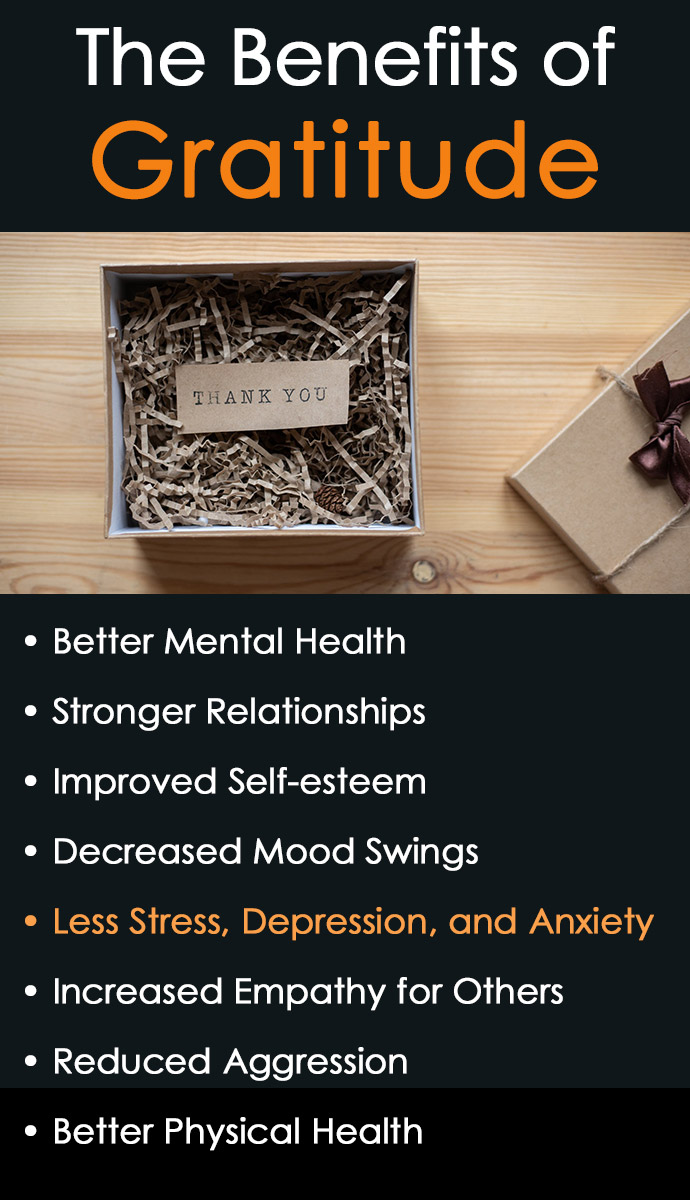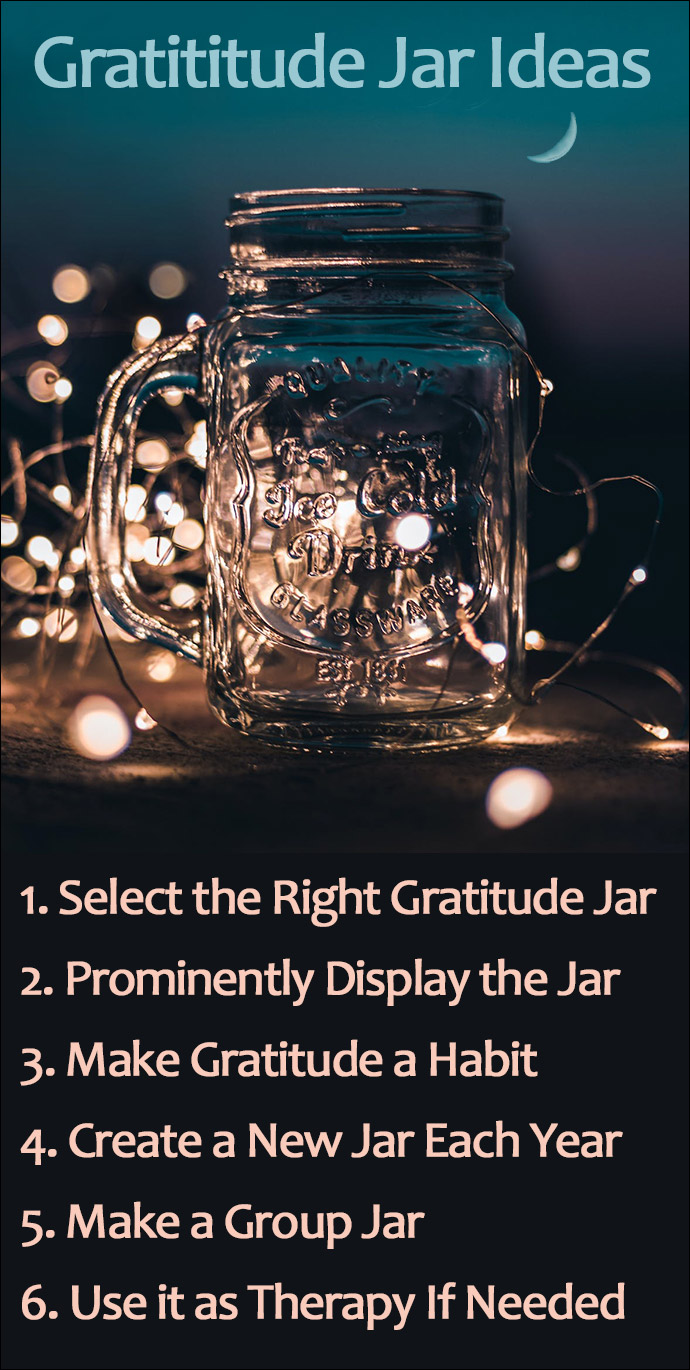Table of Contents
The beginning of a new year is a popular time to set intentions for improving some aspect of our life. Developing an attitude of gratitude is a proven way to promote better mental health and mood, and a Gratitude Jar is an excellent way to get started.
It’s easy to overlook the things we truly care about. Many of us are guilty of taking family members, friends, a steady job, good health, a place to live, and so many other things for granted.
Being grateful is not something that always comes naturally. As it turns out though, taking the time to nurture gratitude has many positive benefits.
Learning how to successfully practice gratitude can help many of us enhance our relationships, stabilize shifting moods, and have better overall mental and physical health.
There are many benefits of gratitude, and with a little effort, we can learn to incorporate an attitude of gratitude into our daily life.
In fact, a research study by Indiana University professors Joshua Brown, Ph.D, and Joel Wong found that practicing gratitude improved the mental health of the study participants and had lasting effects on the brain.
What is Gratitude?
Gratitude is a positive emotion associated with appreciating the good things in our life and being thankful for them.
While gratitude is defined as the state of being grateful, it’s important to take the concept a step further and examine who or what it is that makes us feel gratitude.
Identifying people, places, or things that we are grateful for allows us to recognize the positive aspects they have on our life.
At first, it might be difficult to pinpoint things that make us feel grateful. This is normal, especially during turbulent times in life when it can feel like everyone and everything is out to get us.
It might even take some of us time figure out what we are truly grateful for. But the sooner we can break through negative thought patterns and start feeling grateful for the good things in our life, the sooner we will reap the benefits of gratitude.
Benefits of Gratitude
Learning how to cultivate gratitude takes practice, but given the opportunity, most people can tell you at least a few things that they’re grateful for.
With a little more time and perseverance, staying in a state of gratitude can have a marked impact on a person’s mental and physical wellbeing, as well as reducing many types of depression and anxiety.
Positive benefits of gratitude can include the following:
- Better overall mental health
- Stronger personal and professional relationships
- Improved self-esteem
- Decreased negative mood swings
- Greater ability to handle stressful situations
- Increased sense of empathy toward others
- Reduced feelings of aggression
- Better physical health
Anyone can realize the positive effects of these and other benefits of gratitude with just a little practice.
How to Practice Gratitude
Though it might feel like a strange exercise at first, practicing gratitude can be incredibly rewarding and healing.
One of the easiest ways to start is to be mindful of the little things that you’re grateful for throughout the day, such as:
- Someone opening a door for you
- A person giving you their seat on the bus
- Watching a gorgeous sunset
- Eating a delicious meal
Taking the time to notice the everyday things that make us feel grateful will expand our ability to feel gratitude.
Other Ways to Practice Gratitude Include:
1. Keep a Daily Gratitude Journal
Whether it’s the first thing in the morning or the last thing at night, keeping a gratitude journal filled with moments throughout the day that made you feel grateful is an excellent exercise for enhancing and sustaining gratitude.
2. Volunteering
Giving our own personal time to help others in need is a practical and helpful way to practice gratitude. Even just a few hours of service volunteering can increase our compassion for others and give us a better perspective of our own place in the world.
3. Meditate on Gratitude
Meditating on gratitude can be as simple as closing your eyes for five to ten minutes in a quiet place and concentrating on people, places, or situations that you’re grateful for.
Other thoughts will naturally intrude, but just let them pass and refocus on whatever it is that makes you feel grateful. While this can be done at any time during the day, meditating on gratitude in the morning can set the tone for a great day.
4. Fill a Gratitude Jar
Much like a gratitude journal, a gratitude jar is a place to keep reminders of the things we’re grateful for each day.
What is a Gratitude Jar?
A Gratitude Jar is a simple yet powerful tool to focus on the positive aspects of life and cultivate a sense of gratitude.
Essentially, it is a container to keep and store a record of all the things you are a grateful for in life. Notes or items can be added on a daily or weekly basis, or even each time one happens.
Gratitude Jar Examples and Tips
One example would be to write the name of a friend or a loved one you are grateful for on a piece of paper and drop it into the jar. This could be done on his or her birthday, or after an enjoyable Sunday brunch.
If you are grateful for a decision you made at work or school that improved your life, write it down and drop it in the jar.
Because it will be uniquely your own gratitude jar, you get to make the rules about what it looks like and what goes into it. The one rule to stick to is that whatever goes in the jar must be something that makes you feel gratitude.
While it might seem silly at first, a gratitude jar becomes a visual representation of being grateful in life. It’s a symbol that we can look at in times of struggle and challenge.
When we’re feeling depressed or anxious, we can reach into the jar and pull out something we are grateful for and meditate on that.
By actively focusing on gratitude, it’s possible to train the brain to look for the positive aspects of any situation, which can lead to feeling happier and more fulfilled.
Gratitude Jar Ideas
1. Select the Right Gratitude Jar
Take the time to find the right container for you. You can choose an old mason jar or a big bowl that’s not being used and designate that as your own gratitude jar.
Some people might choose to decorate it, while others will keep it simple and low profile.
2. Prominently Display the Gratitude Jar
Place the gratitude jar in a highly trafficked area, where you will see it a lot, like the kitchen counter, the bathroom, or by the bed.
Display it in a prominent place where you can see it every day and be reminded of all that you have to be thankful for.
3. Make Gratitude a Habit
Next, make a habit of writing down something you’re grateful for and dropping it in the container. You can do it when waking in the morning or going to bed at night.
Set a goal for how many items you want to add to your gratitude jar each week or month. Seeing the jar fill up can be an effective way to track your progress and a reminder that there is so much in life to be grateful for.
4. Create a Jar at the Beginning of Each Year
Some people make a new gratitude jar at the beginning of each year to track the things that made them feel grateful. At the end of the year they read through all the notes they placed in jar.
5. Make a Group Jar
A gratitude jar can be used as a group activity for family members where everyone participates in adding items they are grateful for on a regular basis. At the end of the week, they can be read aloud to the group.
6. Use it as Therapy
Some people use a gratitude jar as a way to cope with difficult times. When you’re feeling down or stressed, take a moment to read through the items in your jar and remind yourself of all the good things in your life.
Like anything in life, the more you do it, the better you’ll get. Routinely adding items to a gratitude jar and reflecting on its contents periodically will open up the mind to being grateful on a regular basis.





